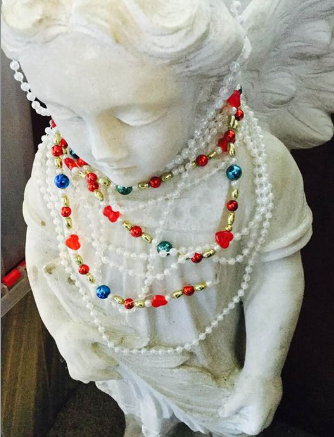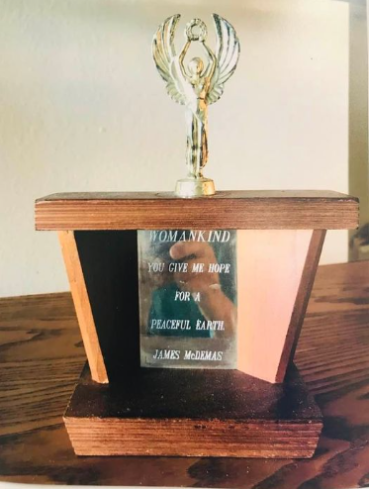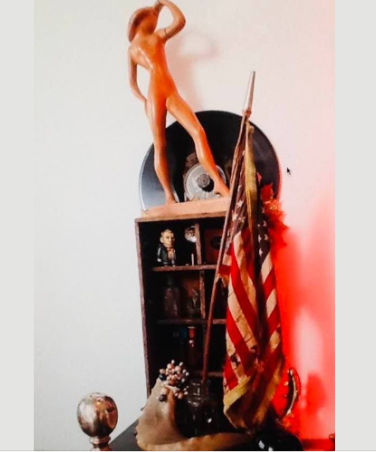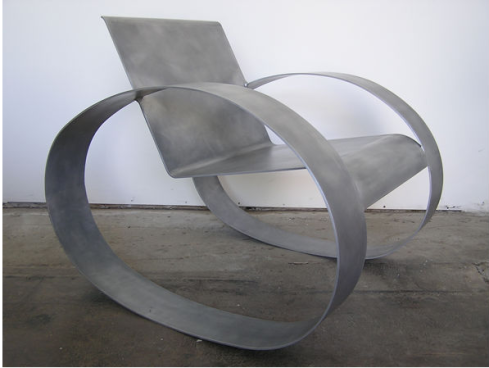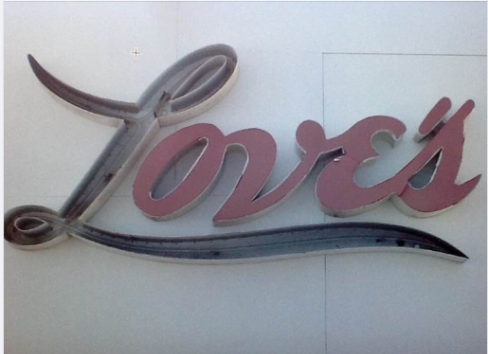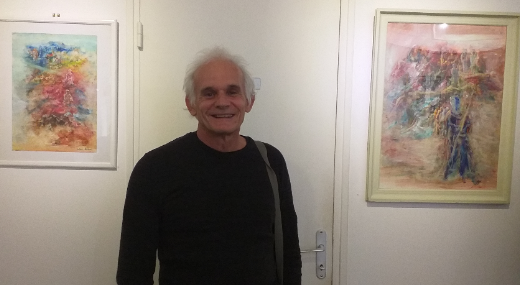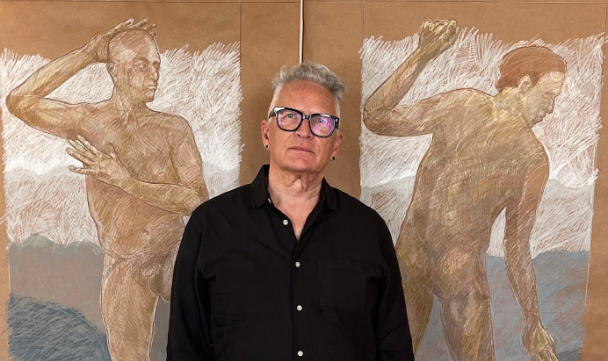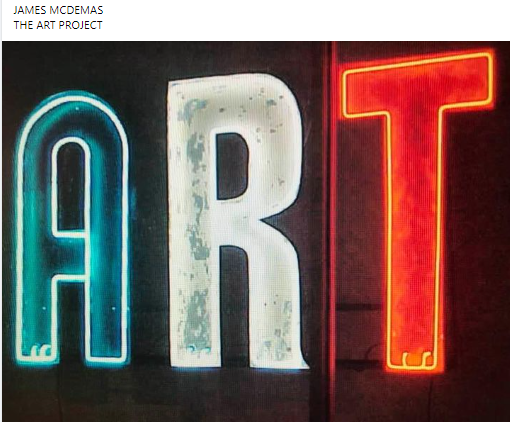
A visionary of art, design and preservation / Un visionario dellʼarte, del design e della conservazione
by/di Pamela Goldman (traduzione in italiano al fondo pagina)
James McDemas, an interdisciplinary designer and artist, was also an avid collector of ‘found objectsʼ. Many of them he salvaged, preserved and restored. Oftentimes, James would combine one of these historic pieces with other materials to create ‘functional visual art, derived from his own authentic American experienceʼ. Also a master welder, landscape designer and photographer, he flourished in the Los Angeles art world, yet maintained a quiet lifestyle by which he could study and record the world around him.
After visiting his family’s farm in Greece, James consciously chose the prospects of living a ‘simpler life’. It has been said that James was gifted in that he could see art in everything. A dumpster in an alleyway, the tiny pebbles collecting on the side of a road… His keen eye for detail no matter how large or small. He took pleasure in this seemingly bountiful universe and recorded all the details of his meanderings both of mind and body. Nothing is accidental and everything has a deeper purpose and meaning according to James.
While this show has dates of James’ physical life on earth, he was a fervent believer that life here on earth and after passing is one continuum, thus it would be not in his service to call this show a memorial. He believed his spirit is endowed in every creation he made and many have claimed to feel his presence in their pieces either in public or private collections.
James McDemas had the ability to feel and see the ‘soul’ of a found object. He lived life as a channel for this intuitive process and important to him, was to create a balanced life of both service and exploration. Often times he found both intertwined within the same project. He enjoyed salvaging found objects and with his great sense of wit, could transform the ordinary into the extraordinary. He gave the viewer of his work, a new way to perceive what he believed to be the intrinsic value of an object, materials and space.
It is important to note that James never judged people, but accepted everyone without predjudice or assumption. His star has a steady glow which time cannot diminish. He also had little interest in self-promotion, marketing or publicity. He firmly felt his reputation would be built with each project and commission he was assigned.
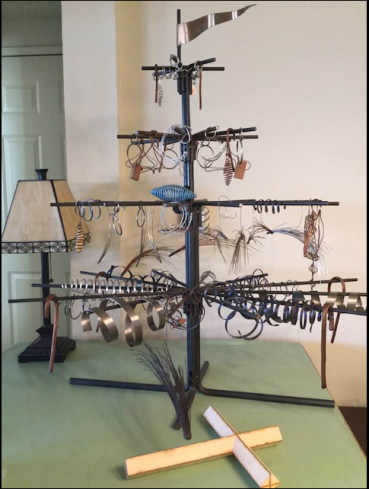
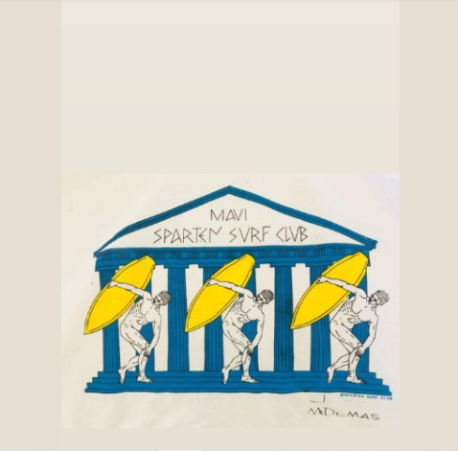
Similar to Leonardo da Vinci, James Mc Demas also recorded everything. Many boxes of files containing thousand of notes, sketches, photographs and so much more, are yet to be understood and addressed. In addition James loved to play the guitar, skateboarding, landscape design, writing haikus, origami were also some of his many enjoyments. Indeed, he loved life and examined it closely, from the tiniest pebble, a disintegrating leaf to mastering the following: sculpture, restoration, preservation, welding, metallurgy, architecture (interiors and exteriors). His learning curve was endless.
It is important to note that James McDemas was an innovator of neon sculpture. He worked both with and for the Museum of Neon Art (MONA). In particular, his designs composed of neon letters spelling ‘A R Tʼ were shown at the Los Angeles Museum of Art Absolute Biennale 2003. This tri-color A R T series can also be seen at MONA in Glendale, CA.
One sculpture which is the most admired creation of James’ art pieces is Neon Mary. This sculpture was donated by his brother and mother to the oncology nurses at St. John’s Hospital. The piece is based on a find of a broken statue of a Madonna which he discovered on top of a trash can in an alley. He felt a great connection to the statue as it seemed her eyes were gazing right at him. With his signature touch, he mounted the statue and placed a white neon halo above her head. James left a note before his passing that he wanted it to be given to honor the nurses who cared for him and to pay any remaining medical bills.
In 1990, James made a series of 6 rocking chairs out of aluminum in a design that is futuristic. His belief was that “The chair is meant to be used. I want to work functionally as a designer”. This principle was applied to all of his furnishing concepts. Immediately bought by the president of Santa Monica College, Dr. Richard Moore, the chair has been permanently placed in the SMC library lobby. The remaining chairs were bought by galleries and private collectors.
There could be volumes written about James and everything he left behind after his tragic death in 2012. After being diagnosed with leukemia, he kept working until 9 days before he died. He championed women’s rights and truly believed women “give me hope for a peaceful world”. This can be seen engraved on his sculpture, Womankind, 1990.
This exhibit was compiled by Pamela Goldman, Curator and Founder of Museum Mile Contemporary, a non-profit institution.
To send a message to the artist or the administration click the link:
https://www.museummilecontemporary.org/
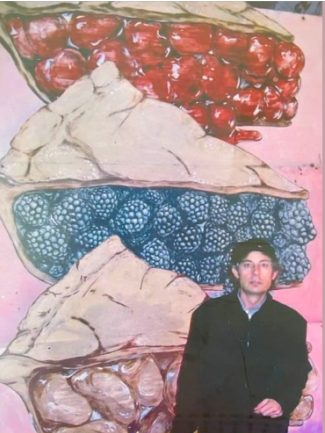
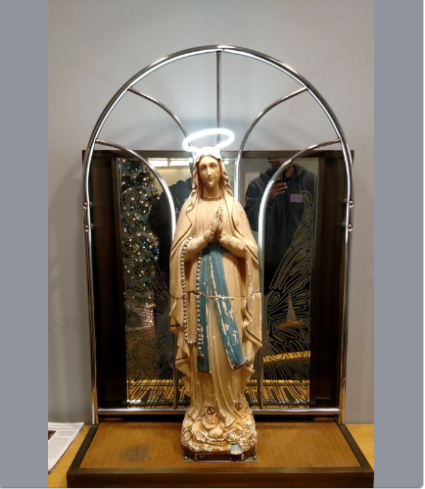
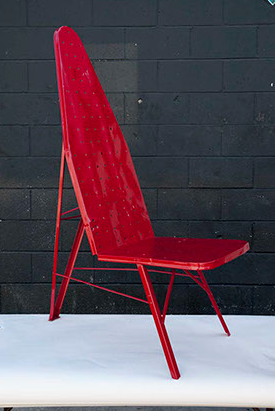
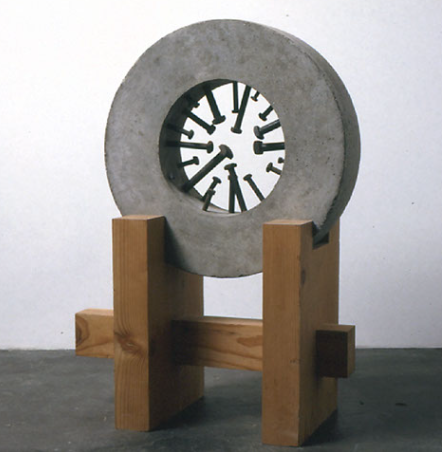
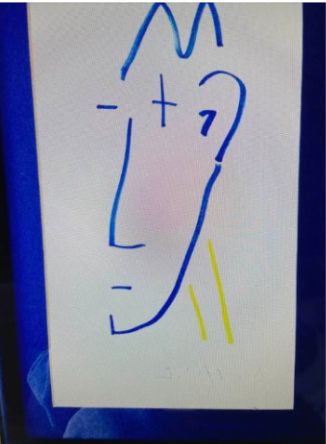
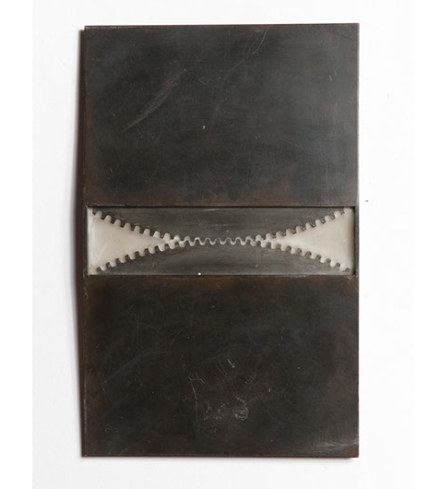
Traduzione in italiano
di Simona Maria Frigerio
James McDemas, designer interdisciplinare e artista, è stato altresì un avido collezionista di ‘oggetti trovati’, molti dei quali ha recuperato, preservato e restaurato. Spesso, James associava un pezzo antico con altri materiali in modo tale da create ‘un’arte visuale funzionale, che derivava dalla sua più autentica esperienza americana’. Maestro dell’uso della saldatrice, paesaggista e fotografo, la sua arte è maturata nel milieu losangelino, sebbene abbia sempre mantenuto uno stile di vita tranquillo adatto allo studio e alla comprensione del mondo che lo circondava.
Dopo la visita alla fattoria di famiglia, in Grecia, James ha scelto consapevolmente di vivere ‘un’esistenza più semplice’. È stato da più parti affermato che James vedeva l’arte in ogni cosa. Un bidone dell’immondizia in un vicolo, o i ciottoli raccolti sui lati di un viottolo… Il suo occhio era sempre attento al dettaglio – non importava se piccolo o grande. Godeva di un universo che gli pareva munifico e registrava ogni passo delle sue peregrinazioni mentali e reali. Secondo James, niente avviene accidentalmente e tutto ha uno scopo e un significato più profondo.
Sebbene questa mostra virtuale segua il corso dell’esistenza di James, egli credeva fermamente che la vita su questa terra e nell’aldilà fossero un continuum e, di conseguenza, non sarebbe giusto considerarla una retrospettiva in memoria. Credeva che il suo spirito fosse presente in ogni sua creazione e in molti hanno affermato di sentirne la presenza nei pezzi presenti in collezioni pubbliche e private.
James McDemas aveva la capacità di sentire e vedere ‘l’anima’ di un objet trouvé. Pensava che la vita incanalasse tale processo intuitivo – e per lui così importante – grazie a un buon equilibrio tra servizio ed esplorazione. Spesso trovava entrambi gli aspetti intrecciati nel medesimo progetto. Si deliziava a recuperare oggetti e con il suo acume trasformava l’ordinario in straordinario. Regalava a coloro che vedevano i suoi lavori, un nuovo modo di percepire ciò che credeva fosse il valore intrinseco di un oggetto, dei materiali e dello spazio.
Va notato che James non giudicava mai le persone, ma le accettava senza pregiudizi o preconcetti. La sua stella splende stabilmente e non può affievolirsi. Era poco interessato all’auto-promozione al marketing o alla pubblicità. Credeva fermamente di costruirsi una reputazione attraverso i progetti e le commissioni affidategli.
Come Leonardo da Vinci, James McDemas registrava tutto. Molte cartelle di file contengono migliaia di note, sketch, fotografie a molto altro, e sono tuttora da essere analizzate e comprese. Inoltre James amava suonare la chitarra, fare skateboarding, ritrarre paesaggi, scrivere haiku e l’arte dell’origami. In effetti, amava la vita e ne esaminava da vicino ogni aspetto, dal ciottolo più minuto o una foglia che si corrompeva alla padronanza di scultura, restauro, tutela, saldatura, metallurgia, architettura (di interni ed esterni). Il suo sapere pareva infinito.
È importante notare che James McDemas è stato un innovatore nel campo delle sculture al neon. Ha lavorato sia con sia per il Museum of Neon Art (MONA). In particolare, i suoi disegni composti dalle lettere al neon ‘A R T’ sono stati esposti presso il Los Angeles Museum of Art Absolute Biennale 2003. La serie tricolore A R T può essere ammirata anche al MONA (in Glendale, CA.).
Una tra le sculture più ammirate di James è Neon Mary, donata dal fratello e dalla madre alle infermiere oncologiche del St. John’s Hospital. L’opera ha come base una statua spezzata di Madonna che l’artista aveva trovato tra la spazzatura in un vicolo. Aveva sentito un profondo collegamento con la stessa quando gli era sembrato che i suoi occhi lo fissassero. Con il tocco della sua firma, aveva montato la statua e aveva posizionato un neon bianco, che produceva un particolare alone, sul suo capo. James aveva lasciato scritto, prima di morire, che voleva fosse regalata alle infermiere che avevano avuto cura di lui e per saldare eventuali conti rimasti relativi alle sue cure.
Nel 1990, James creava una serie di 6 dondoli di alluminio con un design futuristico. Il suo credo era che: “La sedia è intesa per essere usata. Voglio lavorare in maniera funzionale come designer”. Questo principio è stato da lui applicato, nel prosieguo, a tutte le sue teorie riguardo all’arredamento. Il Preside del Santa Monica College, il dottor Richard Moore, ne acquistò immediatamente una, posizionandola permanentemente nell’anticamera della libreria del college. Le altre cinque sono state comperate da gallerie e collezionisti privati.
Si potrebbero scrivere libri sulla figura di James e tutte le opere che ha lasciato dietro di sé. Dopo che gli è stata diagnosticata una forma di leucemia, ha continuato a lavorare fino a nove giorni prima della morte. Era un sostenitore dei diritti delle donne e credeva che le stesse “donino speranza per un mondo pacifico”. Questo potrebbe essere scolpito sulla sua opera, Womankind, del 1990.
Mostra virtuale a cura di Pamela Goldman, Curatore e Fondatore del Museum Mile Contemporary, istituzione no-profit.
Per inviare un messaggio all’artista o all’amministratore del sito, cliccare:
https://www.museummilecontemporary.org/
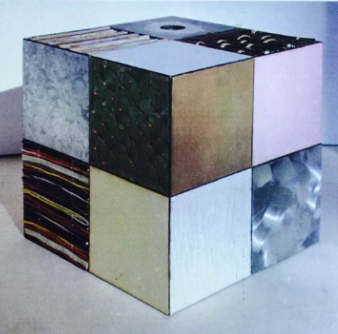
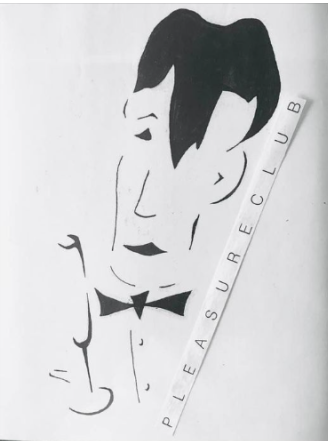
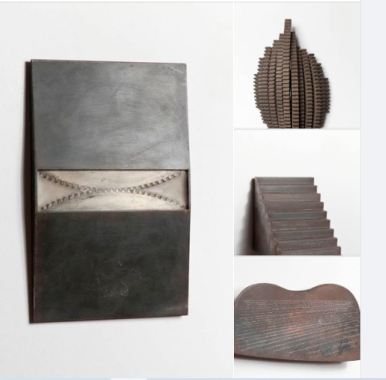
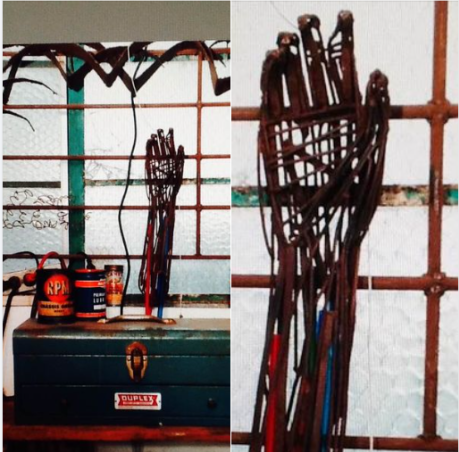
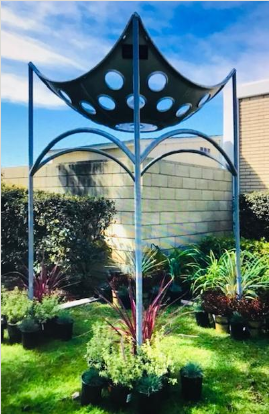
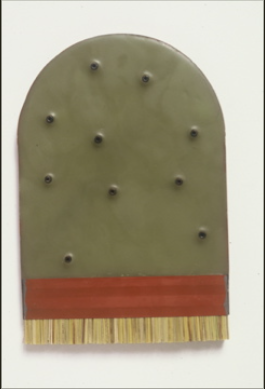
Friday, July 8, 2022 / venerdì, 8 luglio 2022
On the cover and in the article: all images courtesy by the artist ©James McDemas (all rights reserved. Reproduction prohibited). / In copertina e nell’articolo: tutte le immagini courtesy l’artista, ©James McDemas (tutti i diritti riservati. Vietata la riproduzione).
